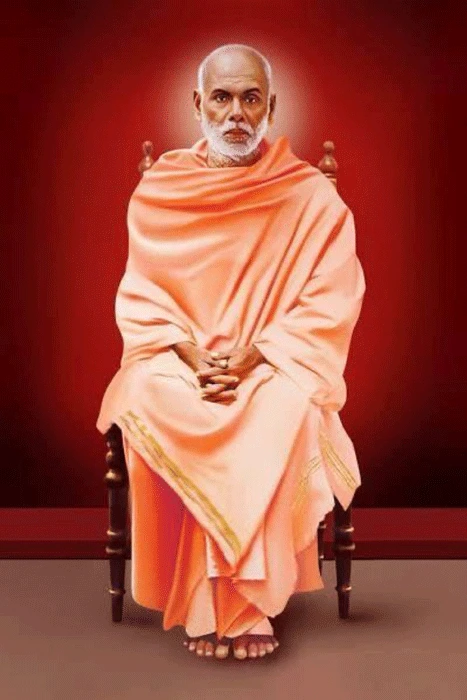
Brahmashree Narayana Guru
BIOGRAPHY
On 20th August, 1854 a child was born in a small cottage in Chempazhanthi village twelve miles to the north-east of Trivandrum (Tiruvanantapura). The child was named ‘Narayana’ but was dearly called ‘Naanu’. Nanu’s father, Madan Asan was a farmer, teacher as well as a Sanskrit scholar. He was well versed in astronomy and ayurveda. Kutty Amma, his mother was a pleasant and young wife. Her name ‘Kutty’ which means ‘child’, perfectly portrayed the basic simplicity of her nature. Nanu was the only boy among his parents’ four children. It is well known fact that a newborn must cry at birth. But infant Nanu did not cry leaving the people wondering about him. As a boy he was quite mischievous. He showed an unusual delight in eating the fruits and other preparations even before they were offered to God, saying that God would be pleased if he made himself happy.
Even as a child, the inequality bothered Nanu. Much against the prevalent customs, Nanu would touch the untouchable children and then touch his parents/relatives.
BOYHOOD
Narayana used to graze the cattle with other boys. He had great love and reverence for monks. Once he cried when he saw some boys pelting stones at a monk. When Nanu was 6 years old someone died in his home. A couple of days later Nanu went missing. He was later found sitting in a nearby woods lost in thought. When the elders enquired him why he had gone there, he answered ” You were loudly lamenting the death in the house day before yesterday. But by yesterday you had forgotten it and had started laughing as if nothing had happened. It looked strange to me.” During his early childhood years, Nanu would have a daily bath and come to worship at this temple near his home. Due to his religious habits, even at the age of fourteen he was known as “Nanu Bhaktan” (Nanu the worshiper).
At the age of five, he began his education in the neighboring school in the old “Gurukula” model. After his elementary education in this school, he became the disciple of a great Sanskrit scholar ‘Raman Pillai Asan’ of Puthupally in Central Travancore. He became well versed in Sanskrit texts. He also started teaching young children in the neighbourhood. Thus he also came to be known as ‘Nanu Asan’.
YOUTH
Nanu’s mother passed away when he was around 20 years old. The death of his mother deepened his spiritual yearning. His sensitive heart was strong enough to face adversities of life. Once Nanu contracted smallpox. Although he suffered a lot he did not let his people know about it. He hid himself in a deserted temple in the forest and applied self medication based on the Ayurveda knowledge imparted by his uncle Krishnan. For eighteen days he stayed in the temple worshiping God and reading ‘Vairagyopadakam’. He returned home on 19th day completely cured.
Nanu’s uncle – Krishnan Vaidyar (Ayurvedic Doctor) saw great potential in his nephew and he arranged for Nanu’s higher education under a revered teacher Raman Pillai at Varanappally. Since Raman Pillai was a High Caste Hindu and Nanu belonged to the Ezhava community, he had to stay outside the residence of the Pillai’s. As a student Nanu was very intelligent and possessed great imagination. He could understand the meaning of all the verses of poetic works without the teacher’s help. He never engaged in gossip but loved solitude instead. He mastered Sanskrit and studied Vedanta and Upanishads. His devotion for God was deepening day by day. Lord Shri Krishna was his chosen deity in those days.
Nanu had to leave school early due to illness. On the eve of leaving school, he asked a friend to give him a small copper pot like those usually carried by wandering mendicants. When queried regarding his memento, he expressed his wish to sink down to collect pearls of wisdom from the bottom of the Ocean of Knowledge and present them in the pot for the welfare of the world.
When he was on the threshold of his youth, he married due to intense parental pressure. But he never led a married life.
SPIRITUAL JOURNEY
Narayana’s mind was always agitated by a spiritual urge. After his father’s death, Narayana left his home in search of spiritual knowledge to achieve his goal of self-realization. During his wanderings he came into contact with Kunjan Pillai also famous as ‘Chattampi Swami’. Narayana become the disciple of a man named Thikkad Ayyavu, from whom he learned Yoga.
Wandering in quest of Truth he came to a place called Aruvipuram. In the solitary forest of Aruvipuram Narayana entered into meditation. Soon devotees began to gather around him. They attended his prayers and spiritual lectures. He realized that true joy lied in doing good to others. He found immense joy in human association. Soon “Narayana Guru”s place became a sacred place of pilgrimage. An Ashram was founded there. Gradually he began his crusade against social inequality.
In those days, the foundation and consecration of a Hindu temple was the exclusive monopoly of the Brahmins. Untouchables were forbidden from entering temples. Kerala then, was a highly caste-ridden society and boiling conundrum of social and economic inequalities. In fact, Swami Vivekanand once described Kerala as a “Lunatic Asylum”. Those days an Ezhava could not get closer than 64 feet to a Nair. The Ezhava in turn, would resent it if any Pulaya or Pariah …still lower down the hierarchy… got closer than 30 feet to him. Educational Institutions / opportunities were not open to untouchables. They were denied all government jobs and had to do traditional occupations specified on the basis of their caste. The lower caste people lived in abject poverty & in servility.
Narayana Guru challenged the deep-rooted caste system by picking up a stone from river Neyyar and installing it as ‘shivalinga’ on a pedestal with a silent prayer. This event made a landmark in the social and spiritual history of India. The first in this line was the temple dedicated to Lord Shiva in Aruvippuram in 1888 A.D. He inscribed the following lines in the temple “This is the ideal place where all live in full harmony without distinction of caste or prejudice of creed”.
Around 1904, Narayana guru visited Varkala Hills. Varkala is a sacred place known from olden days as Dakshina Kashi. After leaving Aruvipuram, Narayana guru chose Varkala as the main centre of his various activities. Varkala Hill was eventually named as Shivagiri. Narayana guru built a Shiva temple on the Hills. Later in 1912 he built a Sharada temple that is unique for its structure and mode of worship.
Naryana Guru trained untouchable boys for priesthood along with other Hindu children at Shivagiri. The Shivagiri Ashram was also engaged in reviving handicrafts and cottage industries.
In 1909, he travelled to Mangalore and founded the “Kudroli Gokarnanatha” temple at the request of the Billawa community.
Revolutionary changes were also introduced in the traditional rituals and ceremonials to be observed in temples. The next milestone in the path of his reform was the foundation of a temple in Murikkumpuzha near Trivandrum in 1922, where, in the place of a deity a bright light revealing the words “Truth, Duty, Kindness, Love” was installed. The climax of his temple reform was the installation of a mirror for worship in the temple founded at Kalavancode in Sherthallai.
The mirror is symbolic of Narayana guru’s teachings that man should find his salvation not in lifeless deities but in himself by the development and utilization of his inner self. Narayana guru’s temples made no discrimination on the ground of caste, creed or religion. Unlike caste Hindu temples, they were open to both Hindus and non-Hindus.
Sri Narayana Guru preached against the caste system. He championed the cause of Education & stressed heavily on education as a tool towards development of the downtrodden. In his great endeavor to uplift the downtrodden and give them respectability in society, he had to face severe personal and institutional resistance. His doctrine, “One caste, one religion and one God” for mankind became quite famous. However, the stress on “one religion” did not mean that he questioned the validity of religions other than his own. Sri Narayana Guru, by his life and example, spoke for the oppressed. He worked for an egalitarian social order.
Sri Narayana guru was a true “rishi” who lived with the people and for the people. He knew that without providing material comforts, it is futile to hold out the illusion of spiritual happiness to the starving and suffering millions. He worked hard to make people give up superstitions and obsolete, irrational social customs. He gave a new code of conduct according to the changing conditions of life. It is known as ‘Shri Narayana Smriti’.
Sri Narayana guru was a profound thinker, a great seer and a born poet. He was also a great scholar in Sanskrit and Tamil. He has been the author of many works in Malayalam and Sanskrit, which are “Atmopadesa Sathakam” and “Darsanamala” which epitomize his great moral and spiritual precepts. He has also beautifully translated Tamil works like “Thirukkural” and “Ozhuvilotukkam” into Malayalam. In his works he has superbly expounded the ‘Advaita’ philosophy. ‘Daiva Dasakam’ a simple prayer written by Guru.
Sri Narayana Guru is one of those rare men whose greatness was recognized while he was alive. No better testimony is needed for this than the fact that Rabindranath Tagore and Mahatma Gandhi had visited and paid respects to him. Tagore, when he visited Kerala in 1922, interviewed the Guru and was deeply impressed that he remarked- “Among the ‘Paramahamsas’ alive in India now, there is none who has lived such a life of purity as Swami Shri Narayana”.
When Mahatma Gandhi visited Sri Narayana Guru in 1923, there was a heart-to-heart exchange of ideas between them and in their dialogue Shri Narayana made no secret of his strong feelings, about the need to eradicate the caste system.
A “All Religious Conference” – a parliament of religions, was convened at the behest of Sri Narayana guru at Alwaye in 1924. In this conference where eminent representatives of all great religions assembled, Shri Narayana proclaimed that the conference was convened “Not to argue and win but to know and to make known”. In a message which he delivered at the conference, he said “This great Parliament of religions makes it abundantly clear that the ultimate goal of all religions is same and so there is no need for followers of different religions to indulge in mutual conflict.”
The Movement of reforms by Sri Narayana Guru was entirely constructive and devoid of any bitterness against the higher classes. None of his teachings and activities had western influence. He was no a superficial reformer. He went to the root of the matter and tried to solve problems in a fundamental manner. He knew that social evils were only manifestations of deeper maladies. Inequalities and injustices arising out of caste-system and other discrimination can be permanently eliminated only if the sense of equality and brotherhood is established. He took the socio-spiritual approach to awaken the spiritual consciousness of the people, to make them realize the essential unity of all beings. He made them realize the utter irrationality of customs and beliefs that make unfair discrimination between man and man.
The great Guru Shri Narayana attained Samadhi on September 20, 1928 at Varkala. The world lost one of its greatest social reformers. But he lives forever in the minds of the mankind.
Guru's Teachings
The Temple
Have the objects for which the temples were created been realized in practice? The worship of Ishwara should not go on only in the temples. It should fill every heart and every home.
Animal Sacrifice
All living beings form one brotherhood. This ought to be the law of life. This being so, how can we sacrifice animals? How can we eat animals without mercy?
Worship
God may be worshiped anywhere. Idols are not always necessary. It is the ideals that counts. Declare truth and love as well as dutifulness in all your temples. Put them into action in your lives too.
Education
Education is a means for anyone who desires progress in this world. Therefore, it has to be given to all…Like men, women also should be educated.
The Evil of Liquor
Liquor is as evil as poison. It should not be manufactured at all. One should neither offer it to others nor drink it.
Caste System
Whatever may be the differences in man’s creed, dress, language etc… because they all belong to the same kind of creation, there is no harm in dining together or having marital relations with one another.
Social Prosperity
The wealth of a country cannot increase if the people do not engage themselves in industry. Our children should be trained in Industrial Schools.
- 1854 – Aug-20Birth in Chempazandi village of Thiruvanantapuram of Kerala
- 1872 – Completed Primary Education . Mother passed away when he was 18.
- 1877 – Sanskrit Higher Education in Varana Palli
- 1884 – Fathers death.
- 1888 – First Shiv Temple established in Aravipura
- 1897 – Vedanta Grantha “Atmopadesha Shatakam” written at Aravipura
- 1901 – Gurudev felicitated as “Uddham Sanskrit Pandit” by Kerala government
- 1902 – Establishement of “Shree Narayanguru Dharma Paripalana Yoga Sansta”
- 1904 -Stay at Shivagiri, Varkala. Establishment of the Famous “Janardhan Temple”. Establishement of temples in AnjiTengu and Peringottu.
- 1906 – Establishment of Temple in Trichur
- 1907 – Establishment of Temple in Kannanoor
- 1910 – Establishment of Gokarnanath Temple in Mangalore. Shree Kanteshwara Temple established in KejiKeda
- 1912 – Establishment of Sharada Temple in Shivagiri
- 1913 – Establishment of Advaitashrama in Aluvayee.
- 1916 – Celebration of 60th Birthday of Gurudeva
- 1918 – First visit to Sri Lanka
- 1921 – Vishwa Bandhu Sammelana in Aluvayee
- 1924 – Sarva Dharma Sammelan and Establishment of Brahma Temple
- 1928 – Establishement of “Shree Narayana Dharma Sangham”
- 1928 – Death on 20th September
1925
- Homa Mantra in Sanskrit
1918
- Sri Narayana Smriti (A work on religious or social conduct) in Malayalam
1916
- Darsana Mala (Garland of Visions) in Sanskrit
- Municharya Panchakam (Five verses on the way of the Renounced Recluse) in Sanskrit
1915
- Nirvriti Panchakam (Five verses on Inward Release) in Malayalam
1914
-Daiva Desakam (Ten verses on God) in Malayalam
- Jati Mimamsa (A critique of Caste) First verse in Sanskrit remaining in Malayalam
- Anukampa Desakam (Ten verses on Mercy) in Malayalam
- Jiva Karunya Panchakam (Five verses on Kindness to life) in Malayalam
1909
- Janani Nava Ratna Manjari (A cluster of nine verses on Mother) in Malayalam
1897
- Atmopadesa Satakam (One hundred verses on Self Instruction) in Malayalam
1888-1897
-Chinta Jadangal (Ten verses on Thought and Intertia) in Malayalam
- Kundalini Pattu (Seventeen verses with a refrain of the Kundalini snake) in Malayalam
- Pinda Nandi (Nine verses on Prenatal gratitude) in Malayalam
- Sadasiva Darsanam (Vision of theEternal Siva) in Malayalam -Devi Stavam (Nine verses on the Goddess) in two parts one in Sanskrit another in Malayalam
- Subrahmanya Stotram (Fifteen verses on Subrahmanya) in Malayalam
- Indriya Vairagyam (Fifteen verses on Detachment) in Malayalam
- Saravana Bhava Stuti (Ten verses on Subrahmanya) in Malayalam
- Shanmukha Stavam (Nineteen verses on the Six Faced god Subrahmanya) in Malayalam
- Kali Natakam (A long poem on the Dance of Kali) in Malayalam
- Bahuleya Ashtakam (Eight verses on Bahuleya ) in Malayalam
- Chitambara Ashtakam (Eight verses on the Mental sky, Siva) in Malayalam
- Siva Prasada Panchakam (Five verses on the Grace of Siva) in Malayalam
- Ottapadyangal (A sequence of fifteen verses) in Malayalam
- Arivu (Fifteen verses on Knowledge) in Malayalam
- Brahma Vidya Panchakam (Five verses on the Science of the Absolute) in Sanskrit
- Isa Vashya upanishad (Translation of the Isa-vasya) in Malayalam
- Advaita Deepika (The bright lamp of non-dual wisdom) in Malayalam.
- Swanubhava Giti (Song of self-realization) in Malayalam
- Ardha Nari-Iswara Stotram (Five verses on the androgynous Siva) in Malayalam
- Tiru Kural (Translation of Tiru Kural) in Malayalam
- Ozhivil Odukkam (Translation from Tamil) in Malayalam
1887
- Siva Ashtakam (Eight verses on Shiva) in Malayalam
- Thevarappathinkangal (Five hymn sequences about God) in Tamil
- Subrahmanya Ashtakam (Eight verses to Subrahmanya) in Malayalam.
- Saravana Bhava Stotram (Hymn to the lake born god Subrahmanya) in Malayalam
1884
- Vinayaka Ashtakam (Hymns in Praise of Vinayaka, the Elephant God) in Sanskrit
- Guha Ashtakam (Eight verses on Guha or Subrahmanyan) in Sanskrit
- Sree Vasudeva Ashtakam (Eight verses on Shree Vasudeva) in Sanskrit
- Bhadralaki Ashtakam (Eight verses on Bhadrakali) in Sanskrit
- Navamanjari (A cluster of nine verses) in two series, one in Malayalam and another in Sanskrit
- Vairagya Desakam (Ten verses on Detachment) in Malayalam
1881
- Chijjda Chintanam (Reflections of the mind and Inertia) in Malayalam
- Daiva Chintanam (Reflections of the divine) in Malayalam
Man’s humanity marks out the human kind Even as bovinity proclaims a cow. Brahminhood and such are not thus-wise; None do see this truth, alas!
One of caste, one of religion and one in God is man; Of one womb, of one form; difference therein none.
Within a species, is it not, that offspring truly breed? The society of man thus viewed, to a single caste belongs.
Of the human species is even a Brahman born, as is the Pariah too, Where is difference then in caste as between man and man?
In bygone days of a Pariah woman the great sage Parasara was born, As even he of Vedic aphorism fame of a virgin of the fisher-fold.
One hundred verses on Self-Instruction
May the chanting be commenced, with the five organs of perception turned inward and pacified, and again and again prostrating before that mysterious embryo (keru), which shines within and without the one who transcends knowledge.
With relentless search one should realize that the inner faculties, the senses, the body and all the worlds of our interest are transformations of the glorious substance of the Sun that shines in the void of the Absolute.
It should thus come to pass, that all the differentiation one might encounter in the world of empirical perception be known as substantially unitive, like the oneness of the waves that constantly rise on the surface of the ocean.
Knowledge, the object of knowledge, and one’s cognition of both are in fact only variations of a beginning-less Being. By merging in that knowledge of infinitude one should become undifferentiated with it.
One should conduct oneself in the light of that eternal lamp which witnesses the sleeping, waking and cliscursive cogitating of those who are wedded to their own worldly affairs, and which for itself has neither any beginning nor any extinction.
Alas! who is there to know the one unchanging Reality when all are subjected to the frequent rise of latent urges that compel them to wake and sleep and to eat and fondle their objects of desires.
One should remain without waking oneself to distracting interests and without sleeping away from the reality of the Self. If one cannot do that by virtue of one’s realization, one should offer oneself to serve those contemplatives who have gone beyond the dualities of birth and death and have known the secret of the pranava–AUM.
This body is like a foul-smelling gun. In it reside one’s sensualities which are like five elusive birds that are always looking for opportunities to feed on chance gains. With right understanding and discernment one should break away from their enchantment and should with resolution aspire for the good instead of being ensnared by the pleasurable. Then alone will one is inside be filled with the radiance of the unsurpassed bliss of the Absolute that will foil all distractions generated by sensuous attraction.
The phenomenal world is like a tree whose truth is concealed by a mysterious creeper, spread out in two directions and overladen with its flowers. A disciplined contemplative who lives under the shade of this tree escapes temptations that might otherwise lead one to tragic consequences such as being caught in hell-fire.
If a man sitting in the dark asks another “Who are you?” and the other out of curiosity asks in return, “And who are you?” the answer that comes from both will be the same–“I am”
What are spoken of as ‘I’, ‘I’,when carefully considered, are not separate entities. Within the substance these are only modes and the continuity of the ego is maintained by the connectedness of the affective attributes into which consciousness modifies.
The ego clings to a perishing body composed of skin, bones, and all kinds of filth. This is the non-self which is sure to decompose. One should aspire to transcend these limitations of the body to grow into the perfection of plenitude.
To become established in the Supreme Being, offer the flowers of your mind to the Great Lord whose body is smeared with the ashes of the triple modalities of nature. Incline before Him in devotion. Turn your senses away from all objects of desire. Feel freed of all bondages. Become cool ‘and do not be excited even by the wonder of the Absolute.
Remember the secret of the Upanishads. The Self in its pure state is limitless and indivisible. It is bereft of divisions in time and it fills the entire consciousness without the divisions of the knower, the known and the knowledge. One does not gain this state by merely making false claims to it.
To those fortunate ones who are enjoying the cream of absolute wisdom, ten thousand years will appear to be a short duration. But to those who are caught in the snare of relativism, even a split second will appear as a thousand years.
To one well-established in the Self, the secret of the Word comes as a cosmic sound. It fills his ears and drowns everything in them like a flooded river inundating a desert. Just as it opens one’s inner ear it also opens the eye of the inner self.
The Self can be compared to a hanging lamp with two tiers, each with five wicks. !t is of timeless origin and is always rotating. It burns as the shadow of the Self. Its wicks are modes of the inner organ and they are fed with the oil of preconditioned urges (vasanas).
The Self is not darkness. If it were darkness, we would not have known and identified ourselves as ‘I’, ‘I’. As we do know, we should let everyone realize that the Self can be known.
Not knowing that everything is a transformation of the primeval Being, people come into clash, saying: it is the base; no, it is the crown; ,no, no, it is this end; no, it is that end, etcetera. All these perceived things of static or inertial forms are transient. How can there be any reality for a wave other than that of water, of which the former is only a mode?
This world has no other reality. If people say it has, that is wanting in sufficient reason. Even if a dull person mistakes a garland strung of fresh flowers to be a horrid reptile, will it become a snake?
This kind is dear to me. To another, something else is dear. Thus there comes confusion in the appraisal of the correct value of the objects of endearment. One should know that his experiencing of happiness is the same as another one’s too.
What is dear to another–~that should spell endearment to me also. This is the correct policy. Therefore, whatever one does for good should be so intended as to make it beneficial to others too.
A compassionate man without any vested interest works both day and night for the welfare of others. On the other hand, a selfish man, desirous of his own good, toils day and night and comes again and again to his frustration.
What is known as that person, or this person, when carefully considered, is the one undifferentiated form of the primeval Self. Whatever one does for the happiness of one’s own self should also include the happiness of others.
What is good for one and might cause disaster to another is opposed to the unity of the Self. Those who grievously hurt others will bring upon themselves the pain of consequential hell-fire.
The Self that owns the body keeps all the limbs held together like a bolt by animating it with a vaporous stuff. Thus having, become identified with one’s physical body, one loses right comprehension and fancies a separate reality for each person.
The Self is that knowledge which brings illumination of one’s existence even when placed in the thick of darkness. As in the miraculous performance of a magician, the same knowledge assumes name and form and engages in action equipped with inner organs and senses.
That which has no beginning and end and clearly sees everything from bottom to top is turya, transcendent consciousness. The other extreme is the inert body which has no knowledge. That which remains in between and articulates as an agent of cogitation is nescience.
For one who sacrifices to the Supreme Lord the blossoms of one’s mind, there is no other duty to perform. Or one can do overt action, by gathering flowers from the forest and engaging in ritualistic propitiation. A third alternative is to be a contemplative who stealthily avoids all snares of phenomenal illusion by exercising proper discernment.
The inert body does not know. It does not cogitate or articulate. One who knows all this to be only variations of knowledge, becomes expansive in the transparency of comprehension and does not thereafter suffer from body identification.
Without prior experience one cannot deduce inference. The Self is not a perceptible factor. So one cannot infer the existence of a principle postulated as dharmi, the basis of attributes.
What we know is only the attributes and not the abstracted universal. As universal abstractions are never perceived, it is incorrect to say that earth and all such are factual realities. They are only compositions of modes.
As when a burning ember is circulated in several ‘figure of 8’ movements and produces endless patterns, know-ledge, in order to know its own polarities modifies itself into endless eidetic modes like ear:h and all such, and creates the phenomenal flux.
This is going on from beginningless time, his divine sport of the world, rotating endlessly, mounted on a chariot of becoming, which has for the spokes of its wheels infinitesimal counts of milliseconds.
The function of Wisdom-discernment comes like the dawn of ten thousand Suns. It is the primal Sun that cleaves asunder the veil of maya that precipitates the transient forms of ignorance.
Innumerable are the powers of knowledge. They can be mainly categorized into two: ‘sameness’ and ‘the other’. One should awake to the clarity of vision in which all forms of ‘otherness’ merge and become one wish’sameness’.
It is hard to win over the obduracy of ‘the other’ without having achieved the mastery of a vivid vision which leaves nothing outside it. By conquering the power of the indistinctness of ‘this’ which forces consciousness to split into specificity, one should gain the wisdom of integral unity. That alone will gain access to pure wisdom which leaves no room either for objectivity or to have the agency of a subject.
What is known distinctively as separate and specific entities–that is the ‘other’. What shines forth as the indivisible whole–that is ‘the same’. This is going to be elucidated hereafter. Having known these states, vertical knowledge and learn the art of unifying consciousness in the all-inclusiveness of the ‘same’.
Apropos to these two powers, there is also a second division. One of these is an attribute of the ‘same’. The ‘other’ qualifies that which is never exhausted of its indistinctiveness that asks for clarification. These are the two kinds.
Their specific powers alternate between the synthetic and the analytic. Even though innumerable are their contexts of operation, the dual functions of assuming the agency of the subject and the object of knowledge–in their entirety, belong to these two entities.
When one says, “This is a pot”, what comes first as “this” is called visama, the difficult to discern; “pot” is its visesa, the qualifying attribute. For the endless sense-oriented cogitations to proliferate, one should bear in mind that the indicative pronoun “this” is the fountain head.
When one says, “This is knowledge”, what comes first as “this” is called sama, the unifying sameness; its distinctive attribute is bodham, “awareness”. For all lamentations like discursive cogitation to cease and to gain the path of liberation, one should contemplate on “this”, which inheres in the universal identity.
Even good people engaged in virtuous action are caught in Nature’s repetitive compulsions and they helplessly go round and round in obligatory action. Mere omission of action does not cure the mind of its urge to modulate. Only unitive understanding, which is bereft of desires, brings emancipation.
The normative essence of everybody’s conviction is the same. Those who do not know this secret become fanatical in establishing relativistic points of view and argue like the proverbial blind men who went to “see” an elephant and couldn’t agree between them in the description of the animal. Avoid all such disputes by cultivating the all-embracing attitude of sameness.
One man’s faith will appear as unworthy to another. A basic dictum of another’s religion is often looked upon with disdain and is rated unsatisfactory. Such confusion born of irrational prejudices continues in the minds of people as long as the unitive secret of universal sameness remains unknown.
It is not possible to vanquish any religion by fighting it. By becoming competitive and fighting each other’s religion, the adherence of the members of the persecuted religion only becomes increased in its fanatic zeal. By promoting religious feuds one is only destroying his own integrity and succumbs to the evils of hatred. This should never be forgotten.
In principle all are insisting on coming to a single faith. Disputants do not realize this. Wise people who are free of sectarian exclusiveness know this secret.
In spite of being identified with one’s own body, people do think if other persons and things as their own and say “This is mine” or “That is mine”. On considering this, it is evident that everyone has some experience of the Oneness of the Self,
All beings, at all times, everywhere, are exerting them- selves to attain happiness. This quest for happiness is the “One Religion” in the world, of which no one has any dispute. Knowing this, one should restrain from being lured into any sin of fighting one’s own fellow beings.
The impressions of earth, water, fire, wind, sky, the ego sense, knowledge, mind (and all aspects of the one and the many such as of) the waves and the ocean–on entering in consciousness transform into knowledge and rise into hierarchic series of consciousness.
From pure knowledge emerges one’s ego-sense which is simultaneously paired with ‘the sense of thisness’. Like a twin creeper, ‘the Self and the other’ entwine the rnsya-tree all over and hide everything.
When the sky of consciousness is enflamed with the vibrancy of sound (the Word) all perceptual forms dis-appear in its radiant blaze. When, in that splendor, the small voice that gives finality to the tribasic segmentation also ceases, there prevails only the radiance of the Self.
The Primordial potency inherent in this is the seed which gives birth to all that we see here. Bearing that in mind, and never forgetting that again, one should meditate on its secret to dispel the spell of rnaya.
In wakefulness there is no sleep and likewise there is no sleep in the waking state. Day after day these twain are born of rnaya’s womb, and they keep on alternating.
Our wakeful experience is also like a long dream. Both our waking and dreaming terminate after a period of time. Being subject to confusion, no one sees the aloneness of the universal substratum.
In the sea of consciousness, modulations arise one after another and cause the experience of perceiving embodied objects. Alas! Where is any end to this? In the sea of the samvit, latent action is always ready to actualize.
Even in a quiescent state of consciousness, there lurk many traits of rnaya. As in an ocean endless effects are produced with the configuration of water, its taste and so on, worlds after worlds are created out of the latent potentials of consciousness.
One should realize that it is futile to ruminate on the past, be expectant of the present and fancy about the future. Without endlessly counting and measuring in confusion, one should cognize the One that always prevails, allowing of no differentiation.
I do not exist without having any knowledge of it. Without me, my knowledge cannot exist on its own. The light that shines is the same, both in the knower and in the knowledge. When contemplated it will undoubtedly be known that both are the same.
Even when a person, oblivious of the absolute status of knowledge, speaks of it as his or her private experience, knowledge does not become either differentiated from the truth of the knower or alienated from the Supreme Word that illuminates all minds.
Objects of perception appear to be of diverse attributes in accordance with the innate quality of each sense organ. Gross objects even of faulty perception such as the sky, when identified with name, become part of the conceptual matrix and transform into knowledge.
Do not despair that you cannot own the Absolute as your private experience. What knowledge can come by mere negation? Nothing. Nor does knowledge come by merely repeating the word “Absolute”. It comes only by continuous contemplation.
Wise men know that there is only Knowledge, so they remain one with it and do not struggle. For them the truth to be known is here and now. Those who do not know their secret think of it as an unknown entity to be sought and discovered. Under that illusion they struggle and agonize themselves. Only a few see the secret of the wise.
Every object of perception evokes a preconditioned memory and one stumbles on its imagined consequences. Banish all such frivolous memories. The only memory that is worth cherishing is one’s primal identification with the priceless ultimate Knowledge.
There is nothing in this world which we have not known at least once (as pure Knowledge). When the same appears clothed in the garment of forms, they are thought of as separate entities, not known before. Who is there to wake up from his somnambulism and realize that it is his own dear Self that is seen as all these? It is very strange indeed.
In this world of becoming, the food that nourishes the body and all else comes as a matter of course. Everything undergoes transformation. Only one thing remains unchanged. That is knowledge. We are also that self- same Knowledge, Others too are none other than that.
All that comes within the ambit of experience can be divided into two. One is the ordinary (that can be perceived, calculated, analyzed and categorized). The other is the transcendent which is beyond the ken of one’s mind to grasp. Apart from these, there is nothing else, here or elsewhere. This is certain.
Like the presentiment of a snake seen on a rope, the reality of the ego-sense shifts from body to the Self and from the Self to the body. On one occasion it is experienced as profound and when it alternates it is felt as profane. Only one who can discern knows the Truth.
Our organism can be compared to a libidinal chariot yoked to sense perceptions which are like its horses. Its occupants ego, the image of the Self. It is driven by the mind, and the ego is restlessly pursuing objects of pleasure in vain.
One pleasure-principle (rati) expands and transforms into the ego, the senses, the mind, the body and all that is; and it is as if its proliferation has no end. it will go on operating itself till the cognizing Self realizes that it is not any of the pleasure-pursuits but knowledge, pure and simple.
Nobody remains established forever in a state of sameness. The process of becoming is going on; and all are subjected to this beginningless sport of the Divine. When all this is known in its entirety, one becomes happy beyond measure.
One aspect is action–that belongs to nescience. There is another aspect which is permeated with consciousness– that belongs to the sphere of knowledge. Although these two thus stand divided, as ordained by maya, to those who are successful in adopting a non-dual attitude, the two together will give the pure experience of transcendence.
In one thing there can be many constituents, and many things can be encompassed by one meaning. Thus, when everything is understood by complementing equations, nothing falls outside knowledge. This secret of all-inclusive knowledge is not known to all.
In the Earth, there are innumerable particles and in each particle there is a world of the same earth-principle. Just as the body is conceptually envisioned by consciousness, consciousness is articulated by the body. When carefully considered these are not two.
It is as if we are in an ocean of consciousness. Nature can be equated to the water. The body is like the foam. The self is the ocean. What constantly arise as ‘1’, ‘1’ are the waves. The flowering of knowledge in the mind are pearls. What each person enjoys is the nectar of immortal bliss.
As sand in a wasteland is ceaselessly blown by gusts of wind which also disturb the surface of a well and make it increasingly shallow, the sands of untruth are continuously disfiguring consciousness, and the inner self is cluttered with multifarious forms.
The Self and the world are not two. The transcendent is the sky. The horizontal blast Of energy is wind. Know-ledge is fire. The senses are water. Objects of interest are the earth. Thus what is shining forth as the quintessence of the five principles is in truth only one.
There is neither any death nor birth nor any manifested form of life. There are neither men nor gods nor anything of that sort–there are only names and forms. Their substance is only that of a mirage in a desert–and that is, for sure, no substance at all.
On the eve of birth there is no existence. The emergence from the womb is not a factual reality in a posterior moment. How can it be? Death is also like this. Everything seems to be by the glorious presence of consciousness.
Rest and motion cannot happen at the same time. In like manner, creation, existence and dissolution cannot happen in the same place at the same time. When critically examined these concepts have no substantial validity. They are only words, such as ksiti, appended as a nomenclature to earth.
Nature divides itself as the enjoyer and the enjoyed. The conceiving self that illuminates all as counterparts of knowledge is the enjoyer; what is extended as ‘thisness’ both here and in the beyond is the universe that is enjoyed.
Like fire that emits from churning sticks, there arises a wisdom of great discrimination from the wind of discerning contemplatives. It burns in the sky of consciousness as a supernal sun and everything becomes fuel for it.
The changeless Self, from its vertical height, witnesses the flux of becoming; and notices how bodies exist and perish, come into being again, and how one is substituted by another.
For the mere fact that one perceives the forms of transformation, it cannot be maintained that the modifications, such as of clay, are real. When critically considered, clay alone is and the form is unreal. The very many entities that are seeming to be so are only nature’s modalities that transform knowledge.
No image can exist without a model. If the world is a shadow it should have somewhere its archetype. No such original is seen anywhere. Therefore, this world is neither a model nor-its image. Everything seen here is like a snake painted by a master artist.
The substance of one body is not in another. This fact contradicts the rejection of individual formations. As the verity of objects persists through time, their substantiality gains the status of the real.
When each entity is taken alone, it has existence and it excludes other things by the law of impenetrability. When this fact is considered, body and such things cannot be rated as real or unreal. They are to be termed as indescribable.
In fact, all that we encounter is real as such. The philosopher in his contemplation sees everything as belonging to one unitive principle. When one does not see this inner truth, several tribulations come like the snares of a revengeful robin.
From knowledge, there emerge countless sparks that are both real and unreal. The conglomeration of them appears as the universe. The understanding that nothing can be, other than knowledge, will give it homogeneity.
The unreal cannot conceal the real. That is our experience. Existence asserts itself at every step, and it produces all effects such as the body.
It is a law that one strives to actualize what is dear to one’s heart. As this impulsion to act is constant, its cause should be understood as a dear value without a beginning, never fully spent, unpredictable and one with-out a second. In short, this is the one happiness that gives reality to life.
The dynamics to act is eternal. As an unexpended law, it acts outside in correspondence with the perception of a dear value. These two are inseparable. By the action performed outside, this binary function is known.
To one who has withdrawn all interest from the changeful body, nothing is more dear than the Self. As this love for the Self never diminishes in anyone, it should be known as the eternal.
There is an inherent inequity in the unreal world and Reality presenting themselves as one indiscernible whole. In these, which cannot be demarcated verbally or conceptually, how can any role of methodology be applied?
This world of manifestation is like a sportive display of maya, who conceals her forms and creates everything with her essence. Continuously she presents one limb after another and makes this grand exhibit of the cosmos with millions of luminaries.
The finitude of the atom and the infinitude of the indivisible whole shine side by side as if they exist and also as they do not exist. So it is not possible to determine with any certainty which of these two experiences is true.
On that day when the finite is fully absorbed in the glory of the infinite, that knowledge will attain the perfection of the Plenum. One cannot even imagine the totality of the all-filling consciousness without one experiencing its immeasurable magnitude. It is like an ocean of silence in which everything is submerged.
It is evident that we do not know what this august reality is; otherwise, how could we qualify every touch of pleasure as great happiness? The Self is not the sum total of dependent origination. Even when the intellect and all such faculties are undone, the Self will remain unaffected as pure knowledge.
Knowledge and the Self spoken of as ‘I’ are one and the same to such a person, from whom the veil of ignorance is removed. To him whose intelligence is still veiled, there will be many hesitations to admit this identity. If ‘I’ can stand apart from Knowledge, there will not be anyone to know Knowledge.
I am neither this nor that nor the content of what is perceived as being. Know it to be pure existence, all- embracing consciousness and the joy immortal.· Be brave with such clear vision, discard all attachment to being and non-being, and gently, gently, merge in that Truth that fills all with enlightenment, and serene joy — AUM.
The Billawar Sevadal of the Association consists of more than 100 disciplined volunteers who help in organizing large gathering and functions. The Sevadal has earned a good reputation for their excellent organising capabilities.
-
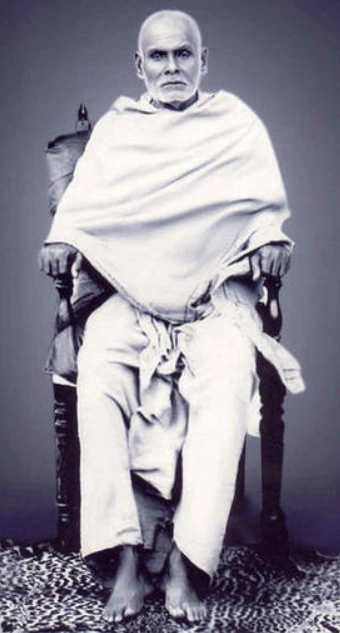
- Original Pic of Guru
-
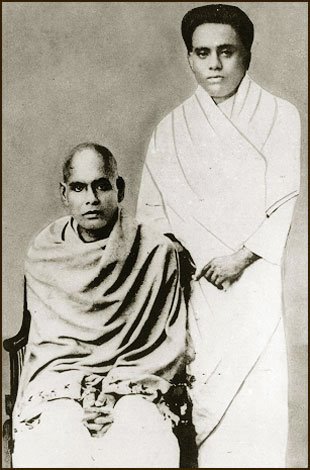
- With disciple Kumaran Asan
-
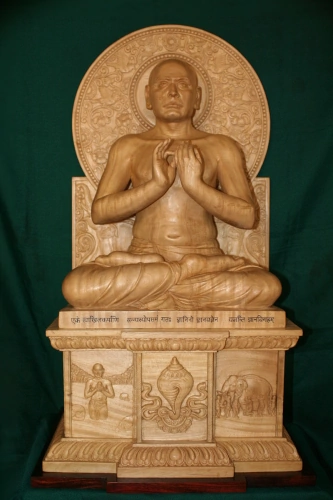
- The First Jnana Vigraham of Guru
-
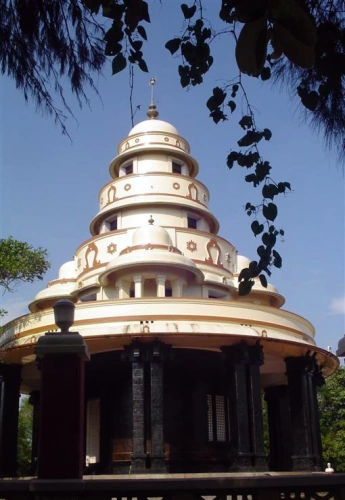
- Shivagiri – Guru’s Samadhi
-
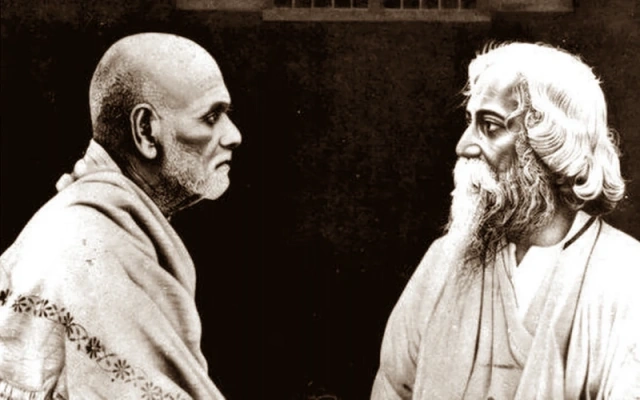
- Guru Meeting with Rabindranath Tagore
-
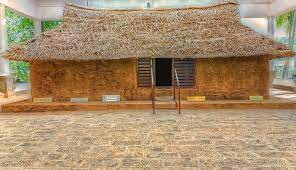
- Vayalvaram House at Chempazhanthi – Birth Place of Guru
-
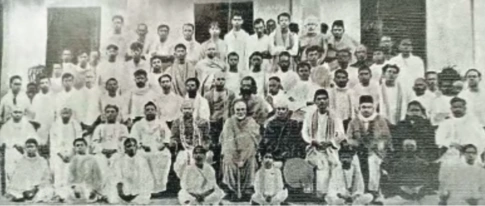
- The all-religion meet at Aluva in 1924
-
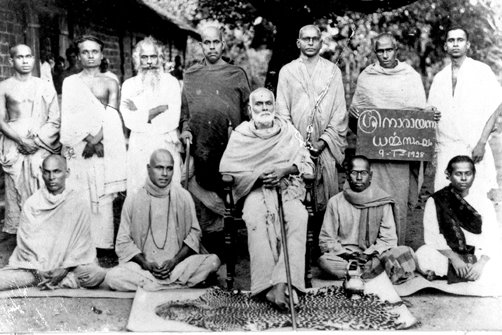
- Members of Sree Narayana Dharma Sangham 1926
-
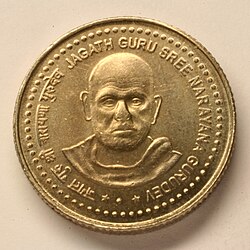
- Guru on ₹5 Coin
-
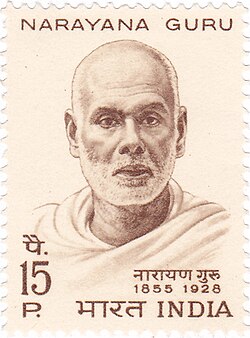
- Guru on 1967 Posage Stamp
-
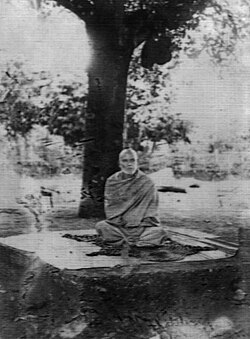
- Guru Meditating

Inspired by Brahmashree Narayana guru
Copyright © 2025 The Billawar Association, Mumbai. All Rights Reserved.
